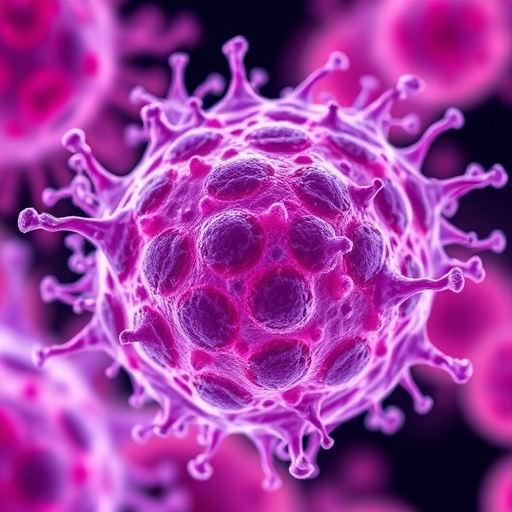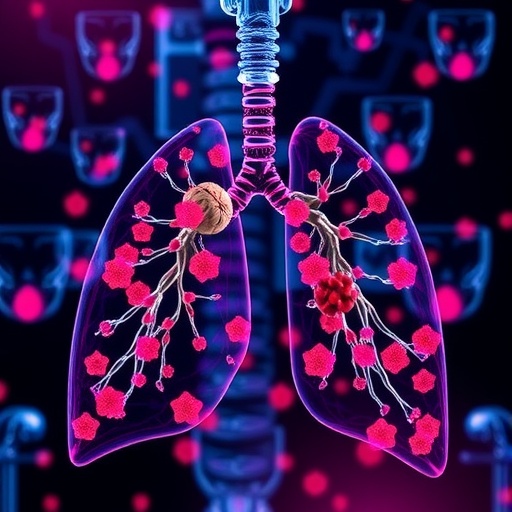Triple-negative breast cancer (TNBC) remains one of the most formidable challenges in oncology due to its aggressive nature and its notorious resistance to conventional treatment modalities. Unlike other breast cancer subtypes, TNBC lacks expression of estrogen receptor, progesterone receptor, and HER2, rendering many targeted therapies ineffective. While initial chemotherapy regimens often induce a significant reduction in tumor mass, a small fraction of tumor cells, termed “persister” cells, survive these cytotoxic assaults. These resilient cells can evade therapeutic eradication and later fuel cancer relapse, a devastating event that occurs in approximately 20 to 30 percent of TNBC patients.
Recent groundbreaking research conducted by a collaborative team of scientists from CNRS and Institut Curie has uncovered critical insights into the biological underpinnings of these persister cells. Their work, performed under the auspices of the “Dynamique de l’Information Génétique: Bases Fondamentales et Cancer” laboratory and Institut Curie’s Department of Translational Research, has demonstrated that persister cells across different patients exhibit a remarkably conserved transcriptional program. This genetic expression signature remains consistent irrespective of the diverse chemotherapy regimens patients have received, suggesting a common survival strategy employed by these cells.
Central to this persistence program is the pivotal role of regulatory molecules that orchestrate gene activity within the surviving cancer cells. Among these, the FOSL1 protein emerges as a molecular “on-off switch” that controls the cells’ entry into a drug-tolerant state. Unlike stable genetic mutations, this mechanism is reversible and non-genetic, providing persister cells with the flexibility to transiently alter their function and withstand chemotherapeutic pressure. Once the threat subsides, these cells can revert, underscoring the dynamic nature of cancer resistance.
The research team employed sophisticated sequencing technologies to investigate tumor biopsies sourced from eight TNBC patients and implanted them in mouse models to monitor tumor evolution and treatment response over time. This relatively large patient cohort, unprecedented in studies of this nature, allowed the scientists to capture a comprehensive portrait of the adaptive behaviors employed by persister cells at various disease stages. Their findings elucidate how these cells evade eradication, highlighting transcriptional programs and regulatory factors that govern therapeutic tolerance.
One of the most striking revelations of this study is the identification of a shared molecular framework orchestrating persistence, which transcends individual patient variability and specific drug treatments. This shared program represents a crucial target for intervention, as modulating the function of molecules like FOSL1 could weaken the cells’ shield against chemotherapy. Importantly, this approach could lead to therapeutic designs aimed not only at killing tumor cells but preemptively intercepting their transition into persistent states, tackling relapse at its root.
The implications of understanding the biology of persister cells extend well beyond scientific knowledge, pointing to tangible clinical applications. By translating these molecular insights into reliable biomarkers, physicians could potentially predict which patients harbor drug-tolerant cell populations prior to therapy commencement, allowing for personalized treatment adjustments. This predictive capacity would constitute a major leap forward in preventive oncology, steering efforts toward more proactive management rather than reactive responses to relapse.
Moreover, the delineation of reversible, non-genetic mechanisms governing drug tolerance challenges the traditional paradigm that attributes cancer relapse largely to irreversible genetic mutations. The plasticity offered by such regulatory programs implies that therapeutic resistance may be dynamically managed through modulating cellular states instead of solely focusing on mutational profiles. This insight opens exciting avenues for drug development that aim to manipulate cellular phenotype rather than genome alterations.
The study’s contribution is further amplified by its experimental model, combining patient-derived biopsies with in vivo mouse models to faithfully recapitulate the human tumor microenvironment. This strategy ensured that observations of persister cell behavior were not artifacts of cell culture but reflective of actual tumor biology. Sequencing of tumors at successive treatment points also revealed temporal changes in gene expression, enabling a detailed map of how resistance evolves and which molecular nodes are most critical over time.
In confronting one of the most aggressive breast cancer subtypes, this discovery shines a hopeful light on the future of cancer therapy. Targeting the molecular circuitry of persister cells could significantly diminish the risk of relapse that burdens TNBC patients. The ability to forestall or reverse the persistent state may render current chemotherapies more efficacious, transforming a difficult-to-treat cancer into one that is more manageable and less prone to deadly recurrence.
As with many pioneering findings, challenges remain in moving from bench to bedside. The research team underscores the need for further development of targeted agents against proteins like FOSL1 and the integration of transcriptomic signatures into clinical workflows. Such advances demand multi-disciplinary collaboration between basic scientists, clinicians, and pharmaceutical developers, united in the goal of delivering next-generation precision therapies for TNBC.
Looking ahead, the paradigm established by this research offers a blueprint for tackling drug resistance across diverse tumor types. The concept of targeting persister cells’ shared transcriptional programs may be broadly applicable, representing a universal strategy to mitigate cancer relapse. Harnessing this knowledge promises a future where therapeutic tolerance is no longer the Achilles’ heel of cancer treatment.
In summary, by elucidating the molecular basis of persister cell-mediated drug tolerance in triple-negative breast cancer, this study paves the way for innovative interventions aimed at preventing relapse. The identification of a conserved persistence program and its regulation by key proteins such as FOSL1 represents a milestone in understanding and ultimately combating therapeutic resistance. As this knowledge integrates into clinical practice, it offers renewed hope to patients facing one of the most challenging forms of breast cancer.
—
Subject of Research: Breast cancer, specifically triple-negative breast cancer and drug-tolerant persister cells
Article Title: Characterization of Drug-Tolerant Persister Cells in Triple-Negative Breast Cancer Identifies a Shared Persistence Program across Treatments and Patients.
News Publication Date: 6-Nov-2025
Web References: DOI: 10.1158/0008-5472.CAN-25-0995
Image Credits: © Equipe Vallot – Institut Curie
Keywords: Breast cancer, Triple-negative breast cancer, Drug resistance, Persister cells, Chemotherapy tolerance, FOSL1, Cancer relapse, Tumor biology, Transcriptomic profiling, Precision oncology
Tags: aggressive breast cancer challengesbiological underpinnings of cancer relapsecancer cell survival strategieschemotherapy relapse mechanismsgenetic expression in breast cancerinsights from CNRS and Institut Curieoncology research collaborationspersister cells in cancertargeted therapies for TNBCTNBC treatment resistancetranscriptional programs in oncologytriple-negative breast cancer





